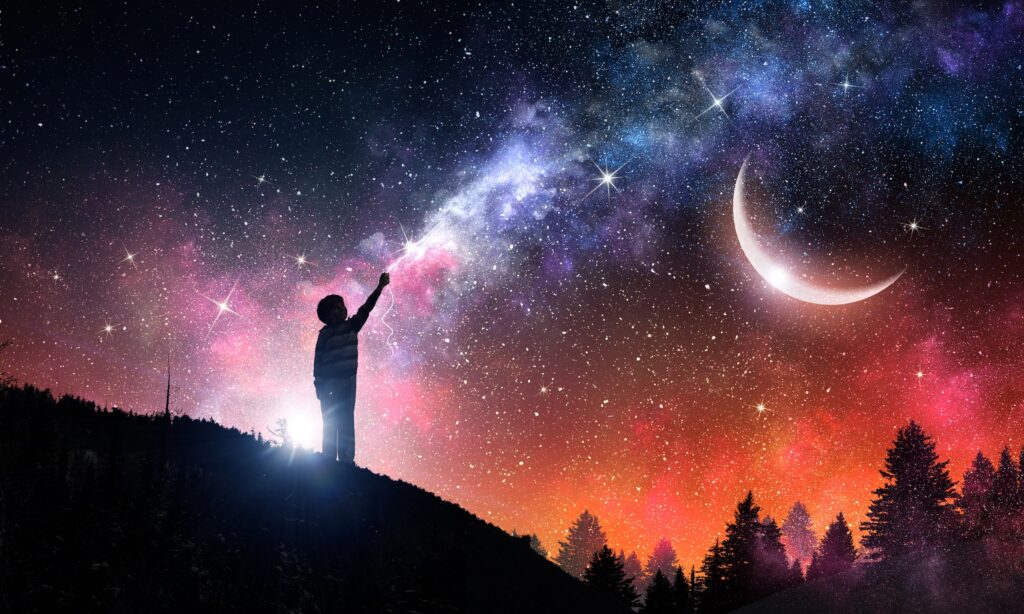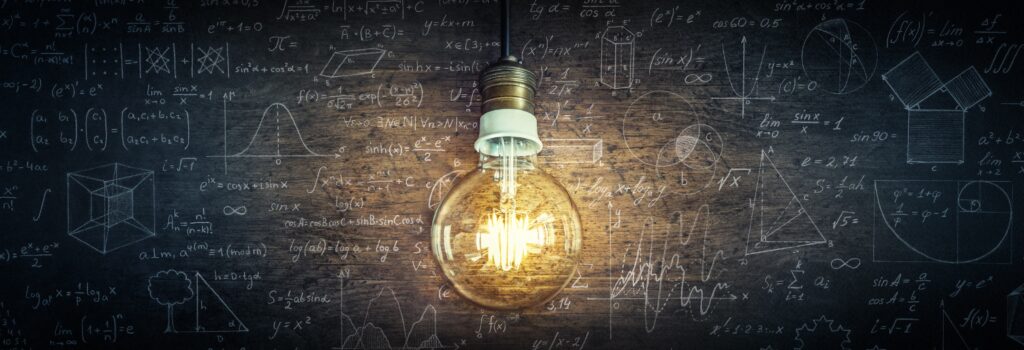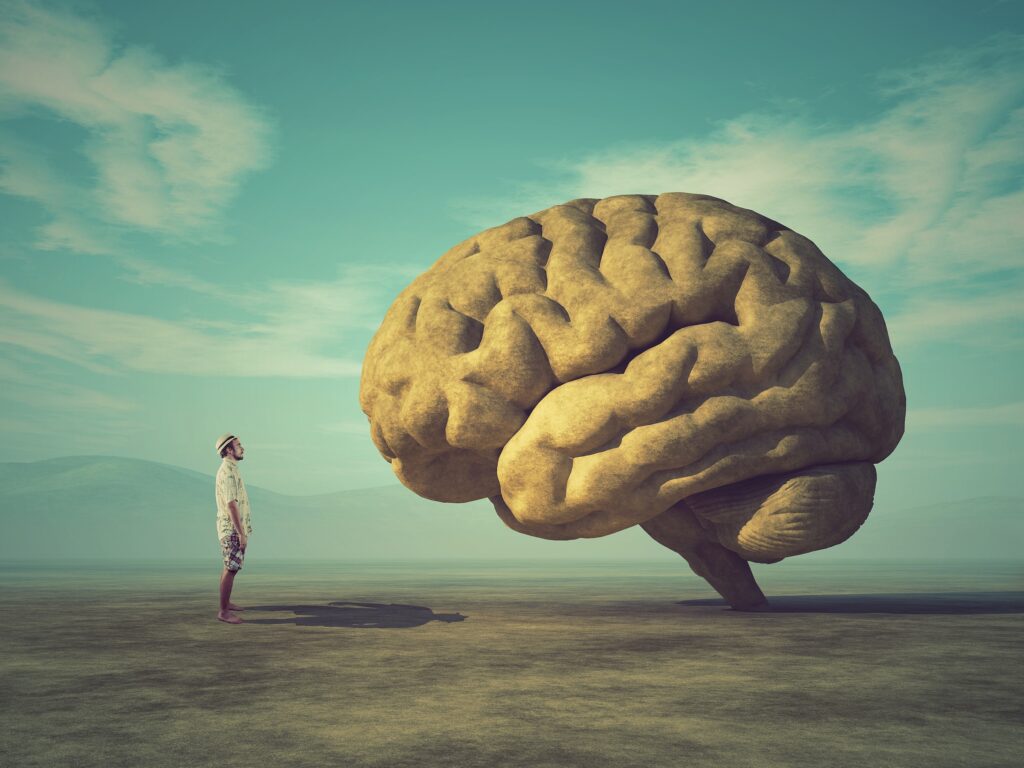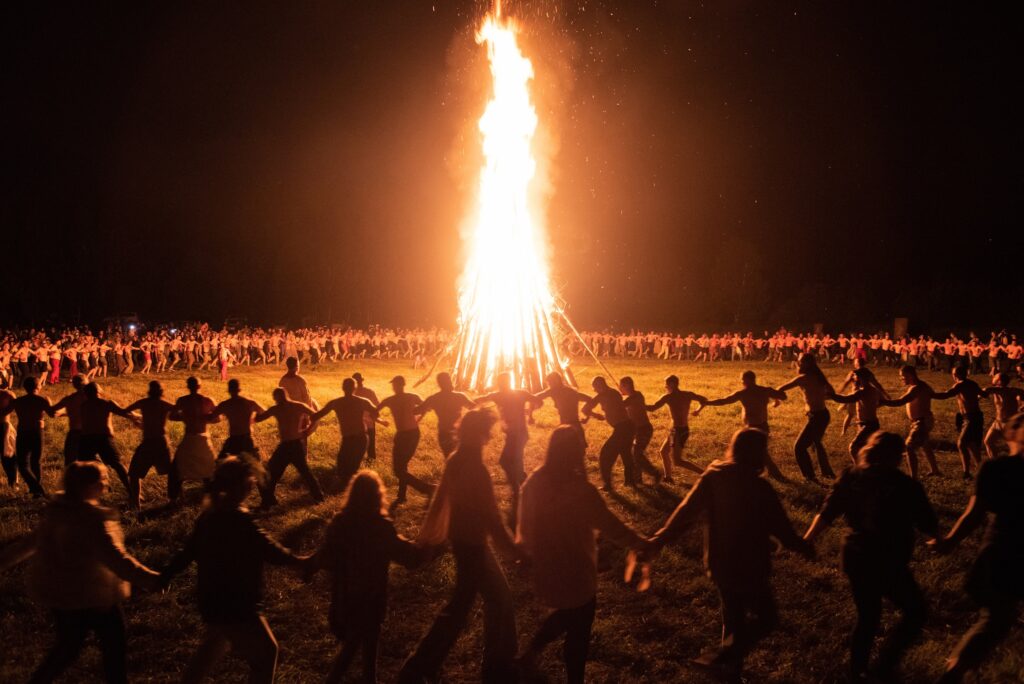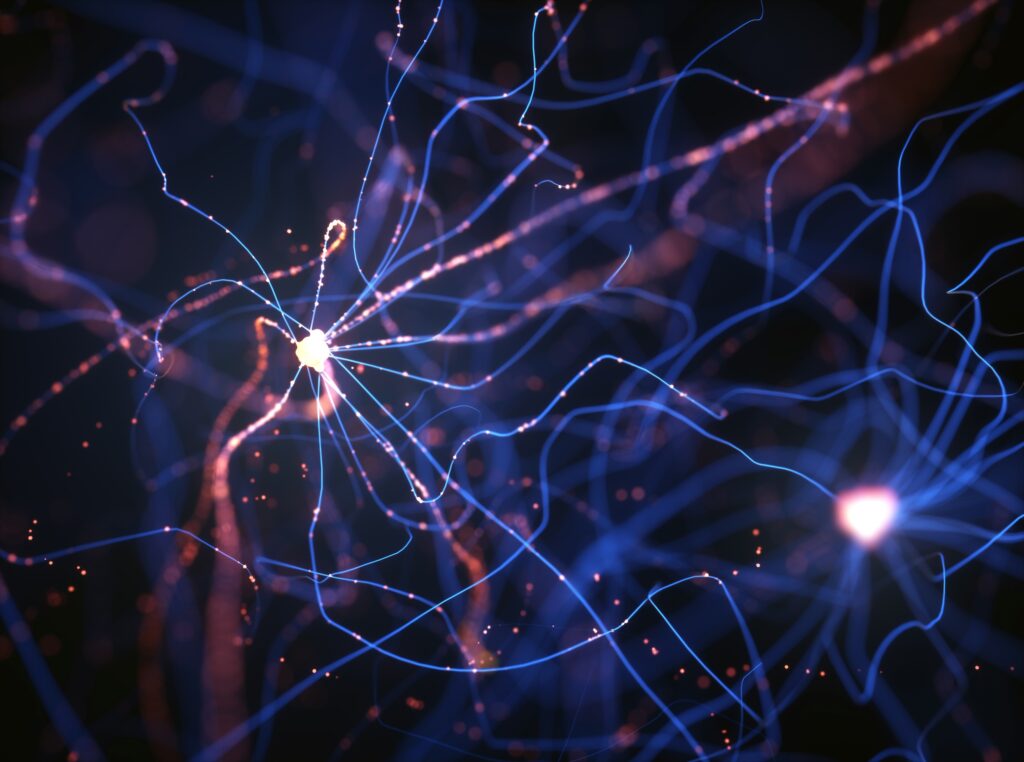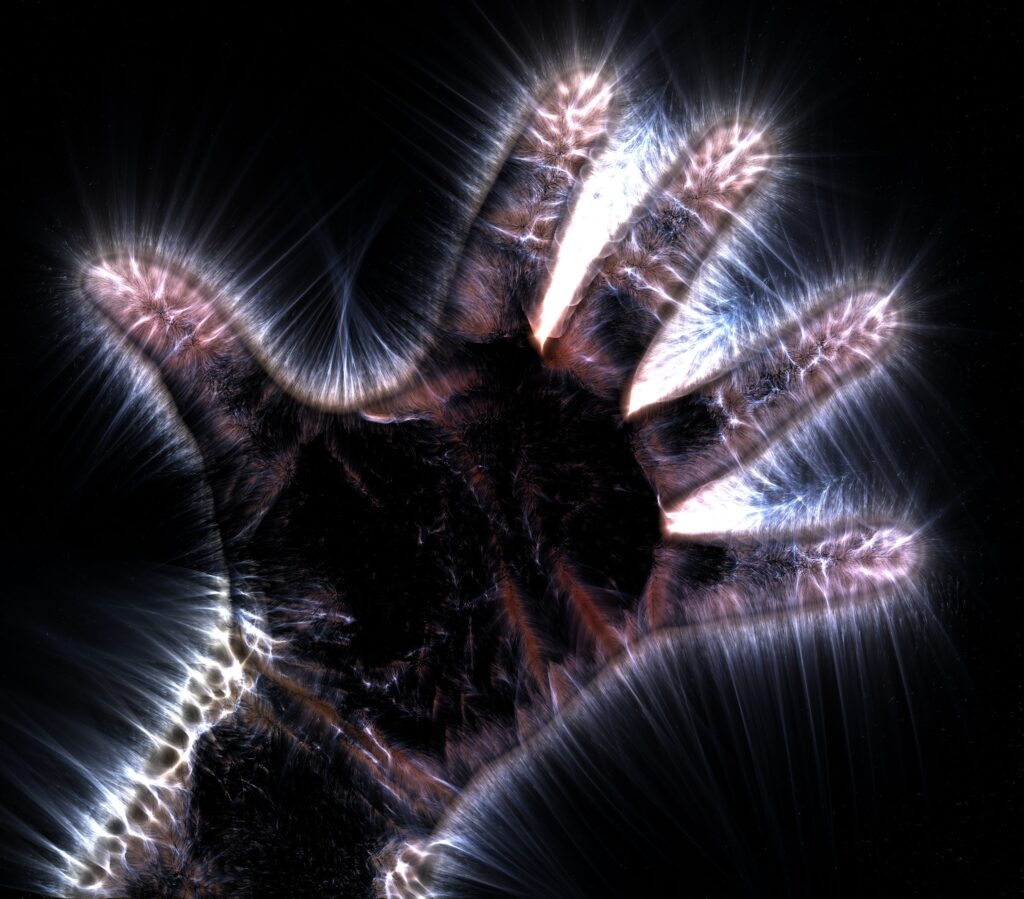Can there be a scientific form of spirituality?
Reading | Psychology
![]() Jonathan Dinsmore, M.S. | 2024-09-15
Jonathan Dinsmore, M.S. | 2024-09-15
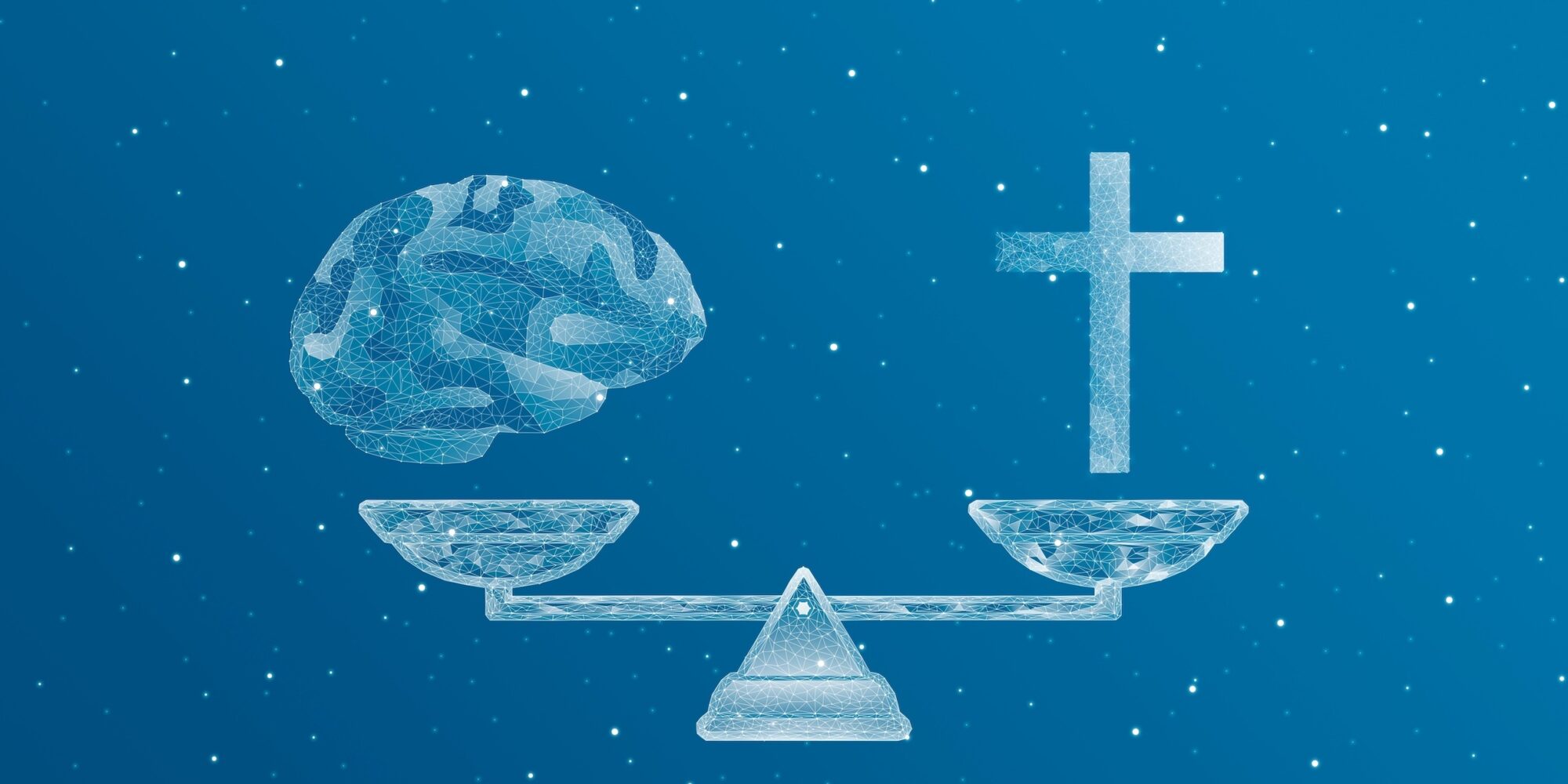
Jonathan Dinsmore proposes applying the same cautious inferential reasoning used in the scientific method to developing metaphysical beliefs based on first-person experience. This may open the door to a form of spirituality that, although still grounded in personal insight and, therefore, not objective in a strict scientific sense, is nonetheless based on the form of disciplined thinking that has made science so successful.
In the span of human culture and individual uniqueness, countless things are believed, from commonplace to cosmic, many of which directly contradict one another, at times within the same individual. A belief strongly held in one thing often prevents the belief in another, even when the latter seems more apparently true. What should be the tipping point for dropping an existing belief in favor of another? Almost as numerous as beliefs are the criteria for belief, how we assess the things we have seen or heard in order to determine what we should believe as a result. For some, a Holy text is the first and last piece of evidence they need for an unshakeable belief, while for others, only the most stringent scientific evidence is worthy of sway.
If there is one lesson we should hope to have taken away from the transformative rise of science in modern culture, it might be the usefulness of taking great care in how we ascribe belief. The primary differentiator between all previous ways of thinking and the scientific way, which includes not just the institution of science itself but scientifically oriented thinking more broadly, is a certain humility in what we think we know, at least in principle, if not always in practice. This has to do with a different, more conservative approach to inferential thinking, or how we extrapolate from our existing knowledge and experiences:
IF this (is what I know/experience/observe) –> THEN that (must be the case)
Understanding our propensity for engaging in faulty inferential thinking, and therefore the necessity of a prudent and frugal approach to same, is the fundamental insight that serves as the rationale for submitting conceptual models to the acid test of meticulous investigation and experimental testing, which I regard as the essence of science.
The error of many previous belief systems and their unwarranted certainty in concepts we now understand to be false, in some cases absurd, can primarily be attributed to insufficient inferential caution, with some other contributing factors. Examples abound: the “humours” of early modern medicine, the geocentric model of the universe, the belief in phrenology, the once-accepted notion of spontaneous generation, and any number of theological speculations. In each case, unjustified extrapolations from existing observations or knowledge (supposed or actual) can be seen as the primary contributor to error. Although it is also possible to have too much inferential caution, as I consider to be the case in scientism, it would be foolish to deny the overall significance of this insight. The advancements it has facilitated in the areas of knowledge and technical capabilities for the human species, as well as impact on global culture, make its significance impossible to deny.
The significance of inferential caution or prudence to our quest for valid knowledge forces a question: What is the appropriate balance? How generously or frugally should beliefs be granted from our experiences and observations? Just how much evidence should we require to change a belief? What approach will maximize both the accuracy and scope of our knowledge? In other words, how can we get inferential thinking right, or optimize our approach to it?
Accuracy rather than scope has been the priority in the scientific endeavor broadly, and not without reason. Much of scientific progress in the material domain is attributable to it. However, the relentless focus on accuracy has resulted in certain attitudes and beliefs that also limit scope. Inherently, when one determines that only the most stringent form of evidence is permissible, one also decides that only a limited scope of phenomena is knowable; taken to its logical conclusion, this results in doubting even the most intimate brute fact of one’s own awareness, as in eliminative materialism. In contrast to this extreme of inferential caution, the extreme of deficit is no more desirable. On the other hand, when there is too little caution, belief is ascribed willy-nilly, resulting in a proliferation of erroneous beliefs and, ultimately, outright delusion.
It stands to reason, therefore, that, somewhere between these two extremes, there is an ideal epistemic balance. Expanding the scope of knowing necessitates the consideration of types of evidence beyond what is currently considered valid within academic science and philosophy, which means that doing so without wandering into the delusional territory of inferential laxity is the primary challenge. In other words, for those of us who see value in venturing beyond the boundaries of evidence typically considered academically and scientifically valid to expand the scope of our knowing, doing so without losing the invaluable principle of epistemic prudence is our chief obstacle, aside from perhaps social stigma from the materialist orthodoxy.
Such careful expansion of scope without sacrificing accuracy should be the goal of those who desire a form of spirituality that is maximally intellectually viable, in an age when the value of a scientific approach to thinking is so well established. Increased interest among scientists, academics, and the secular laity in topics such as Buddhism and other Eastern philosophies, nondualism, psychedelic medicine, panpsychism, idealism, simulation theory, contemplative practices, psi phenomena, and related topics can all be considered indications of a certain ripeness and reaching for just such a rational and scientifically compatible form of spirituality. Still, as yet, no definite crystallization of such has been widely accepted.
This is why I aspire here to suggest a way forward in creating a foundation for a shared empirical spirituality, that is, a rational spiritual philosophy that operates in the same fundamental spirit as scientific thinking, utilizing experience (of all kinds) and sound reasoning in determining how belief may be responsibly ascribed to things beyond those that are regularly and repeatably observable with our senses and sense-enhancing instruments. Sound reasoning is the key here, and I consider the proper calibration of inferential caution to be the key principle in successfully moving forward with such an endeavor. Sound reasoning for an intellectually viable empirical spirituality is critical, and I suggest that it is more-or-less a question of getting inferential caution right, of finding the proper balance that will prevent us from going either off the “woo” deep end, or being locked into nihilistic skeptical paralysis.
There have been some in recent years who have sought to promote the concept of “secular spirituality,” and so it may be warranted here to point out the difference between this and the empirical spirituality proposed here. For the most part, this has been proposed in response to a recognition of the value of spirituality, but an unwillingness to contradict materialist commitments, and engage in the types of beliefs perhaps essential to spirituality, particularly the reality of a spiritual domain of existence, and a spiritual self that is ultimately independent of body and brain. This attempt to create spirituality without spirit I regard as profoundly misguided, and actually the opposite of what I propose here. Secular spirituality, like “celibate sexuality,” seems to be borne of the idea that by adopting a title, one may gain the benefits of a thing, even if excluding all (or nearly all) that is beneficial about that thing. By this principle, lazy exercise, gagged discussion, parked racing, indoor camping, and blindfolded sightseeing all likewise deserve our consideration.
The goal of the empirical spirituality I advocate here, on the other hand, is specifically to bring a scientifically minded approach to metaphysical beliefs. This is the opposite of secular spirituality as so conceived, because the latter seeks to harvest spiritual concepts and practices in such a way that drains them of their essence, ensuring only a husk will remain. While one approach has decided from the beginning what is real and true (materialism), the other is borne of intellectual humility and curiosity. If we recognize our ignorance but desire valid knowledge, then the chief goal must be to carefully sort through the evidence and determine what ideas and phenomena within that vast and somewhat heterogenous domain of human life we call spirituality may be regarded as valid according to empirical criteria.
This will inevitably involve the consideration of that category of experiences that has been given so many titles: altered, nonordinary, transcendent, anomalous, spiritual, exceptional, and others. Such rare and profound experiences seem to form the likely source of most or all spiritual beliefs, from the enlightenment of individuals like the Buddha to encounters with angels or deities like those of Moses and Mohammed, and the alleged revelations they brought. As such, careful analysis of such experiences, historical but especially contemporary, under the preface that at least some of them may in fact be glimpses beyond the realm of ordinary physical life, should form a central aspect of the endeavor.
These experiences and the inferences that have been drawn from them are multitudinous, and may seem like a cacophony of contradictions, if all must be regarded equally. However, if taking a scientific approach geared toward conceptually approximating a singular reality, there is little reason to so regard them, and this is a critical point. Knowing what we do of mental illness, hallucination, delusional thinking, and inferential foolhardiness, it is perhaps inevitable that many experiences that are thought to be revelatory by the experiencers may in fact be hallucinatory, hoaxes, or delusory inferences. This is of course the conviction of the materialist regarding all such experiences, but to reject this sweeping premature conclusion is not to reject that it must be true in many cases, and to varying extents, for that seems inevitable. This implies, naturally, that some alleged glimpses may be more veridical than others, and many not at all, regardless of if they are thought of as such; in fact, this must be the case.
Hence the importance of careful study of, and even more careful inferential reasoning about, these experiences, particularly in weighing their evidential value, and considering how to construct metaphysical models of reality based on them. Of course, there are other areas of science and other knowledge disciplines that may likewise factor into our consideration. However, the goal here is to expand cautiously from the bedrock of certainty represented by scientific knowledge of the physical universe, the regularities of the world around us that are most well-established, to that which, though less certain, we feel we may have good enough reason to take seriously as probable metaphysical realities beyond. As such, we should proceed from the strongest evidence to the weakest, as best we can.
Different individuals may of course have differing ideas of what constitutes the strongest evidence, but this is not a problem if we apply the criteria to this area that we would to any other. That is, evidence should be weighed according to the degree to which it contradicts the null hypothesis or default assumption, which in the case of these experiences, can be thought of as the hallucinatory-hoax-delusion hypothesis. So, those experiences that are most implausible as hallucinations, hoaxes, or delusions have the strongest probability of being veridical. Since not all experiences have equal implausibility in this regard, it naturally follows that a hierarchy would result, in which those experiences with the greatest probability of veridicality play the greatest role in shaping what metaphysical phenomena we infer to be real, or what we may choose to believe, in an ongoing critical assessment of metaphysical models.
What makes an experience implausible as a hallucination, hoax, or delusion? Some examples will serve to illustrate. In my view, the experiential category that is most contradictive of this null hypothesis is veridical perceptions that could not have happened by the typical sensory means, especially when occurring via an experience whose content has clear and direct metaphysical implications. This is exemplified by perceptions of distant or otherwise inaccessible events that are later verified by third parties during out-of-body experiences, and even more so when occurring at a time that the heart and brain were flatlined, as in some near-death experiences (NDEs). This phenomenon is in principle impossible to explain under the current materialist model, beyond cynical hoax accusations. The only other explanation to which a wary skeptic might retreat is the psi hypothesis, in which case not only is psi acknowledged, but one must explain why psi is occurring under conditions of minimal or nonexistent brain activity.
Another phenomenon that is difficult to explain in terms of hallucination, and therefore carries a heavy evidential weight, is experiences that contain very similar and specific content, despite the experiencers not knowing one another, and there being no common cultural source of such content that might be supposed to have mutually informed their experiences, if they were indeed hallucinatory. Again, NDEs stand out as an exemplar in this regard as well, since they contain remarkably similar content, despite occurring to a variety of NDE-naïve people from a variety of backgrounds, religious or secular beliefs, and under a variety of (typically near-death) conditions. In this, a much lower level of variety is present than would be expected if the experiences were purely hallucinatory, which raises the question of how such similarity occurred if they were.
Another consideration, as just alluded to, is the degree to which the experience occurs to those who are not seeking it, who are no more inclined to mental instability than the general population, and who come from a variety of cultural backgrounds, holding a variety of beliefs. The less reasons we have to think that a person’s own mind was conjuring the experience up according to its existing beliefs and predispositions, which should be another source of variety if they are indeed hallucinatory, the more reason we have to think it was not so conjured. This follows a similar logic to that involved in considering the same patterns of thinking and behavior across many cultures as evidence of their heritable biological origin, in evolutionary psychology.
To be completely clear, what is suggested here is a continuous assessment of probable metaphysical models, perhaps according to Bayesian principles, in light of a rigorous assessment of experiential evidence of such, in toto. In this assessment, those models indicated by the strongest forms of evidence are assigned the greatest probability. New evidence is then considered in light of that probability structure, as is the formulation of metaphysical beliefs, just as is the case with forming physical beliefs from the experiential evidence of physical science.
In terms of how we may ensure a prudent inferential approach once we begin reasoning about these implications, the main issue is simply a hallmark of good critical thinking, to avoid making unwarranted inferences or jumping to conclusions. For instance, in the presence of many who experience a dark void and think it to be the ultimate reality, and those who experience an ocean of light and think it to be the ultimate, there is no need to throw up one’s hands at the problem. The key insight is that both parties are simply making unwarranted inferences, since no individual experience should give anyone any great sense of confidence about something as grand as ultimate reality. At least, not to any degree that would justify asserting such as a view others should adopt. Furthermore, in a metaphysical model involving layers to reality and consciousness, it is possible for many such domains of existence to have ontological status (to be real) simultaneously, and to leave the status of ultimacy as an open question that is unlikely to be definitively answered.
These are some of the chief considerations that might inform our analysis, to which many more can and should be added. The point here is not to outline a definitive list of such, but rather to introduce the method of analysis via some of its clearest examples. It may not surprise the reader at this point to know that I personally find NDEs the most convincing form of experiential evidence, and therefore consider them a primary indicator of what may be beyond the physical as we know it. Others may think another type of nonordinary experience weightier evidence, and I would welcome them to make their case as to why.
Regardless of such inevitable disagreements, like those in mainstream science, a common method of assessment can to some extent unite all who engage in such an endeavor. This is because we are capable of recognizing and sharing a common goal and general method of achieving it, despite the specific implementation and interpretation varying between individuals or camps. Again, this is exemplified quite well by the scientific community, and other legitimate knowledge disciplines for that matter, and so establishing a comparable shared framework is apropos to an expansion of empirical investigation into the metaphysical domain.
This would represent a path forward that may be walked with perhaps less of the wariness of foolishness that currently prevents many scientifically minded people from directly pursuing spirituality, despite their yearning and indirectly reaching for it in various ways. On the other side, the body of people who have embraced spirituality may find a way that is more balanced and structured than the somewhat haphazard approach so commonplace in that subculture, at least for those who may see the value in avoiding foolishness. Like science, this is really a formalization and systematization of a way of reasoning that many of us already do more informally in our own individual spirituality or philosophizing. The difference here is that it may facilitate our thinking systematically together on this topic, in such a way as to construct plausible metaphysical models grounded in evidence and critical analysis.
Science and spirituality are both undeniably significant to humanity, and there are many who are outside traditional religious institutions, perhaps the majority of that category, who feel that between the radical poles of militant skepticism and new age woo, there must be a better, more balanced way. Many already attempt to strike that balance in their own personal philosophy and spirituality. However, by establishing standards and principles for thinking together systematically on this topic, as with so many other pursuits that benefit from that approach, we will likely find a swifter approximation of the truth of the matter together.

Essentia Foundation communicates, in an accessible but rigorous manner, the latest results in science and philosophy that point to the mental nature of reality. We are committed to strict, academic-level curation of the material we publish.
Recently published
Reading
Essays
Seeing
Videos
Let us build the future of our culture together
Essentia Foundation is a registered non-profit committed to making its content as accessible as possible. Therefore, we depend on contributions from people like you to continue to do our work. There are many ways to contribute.







